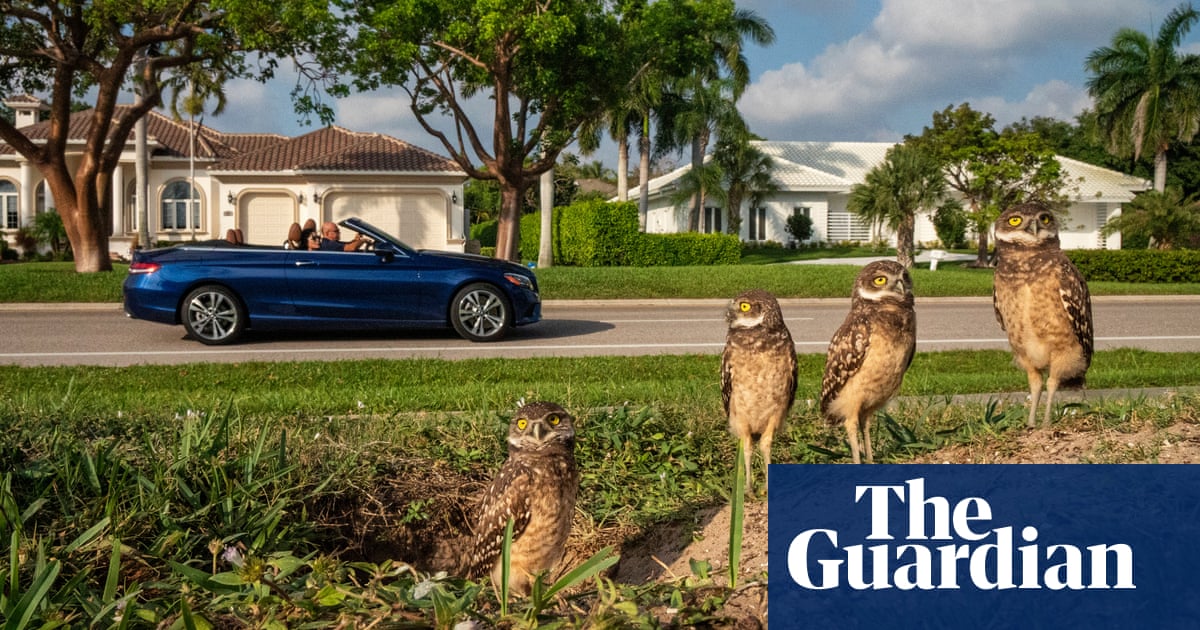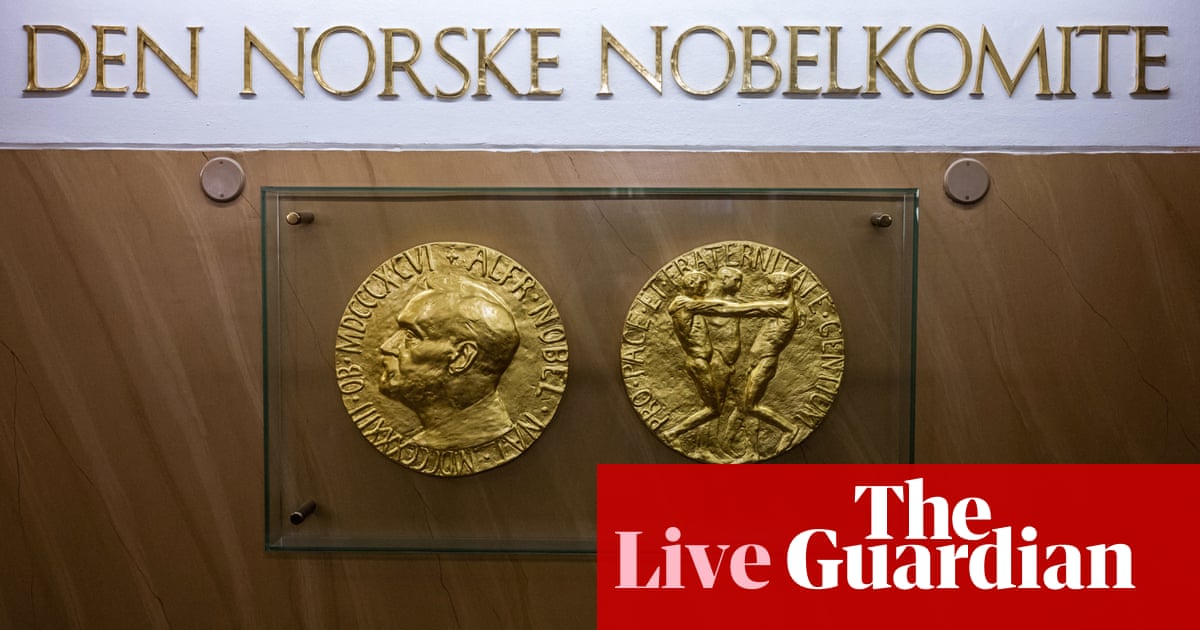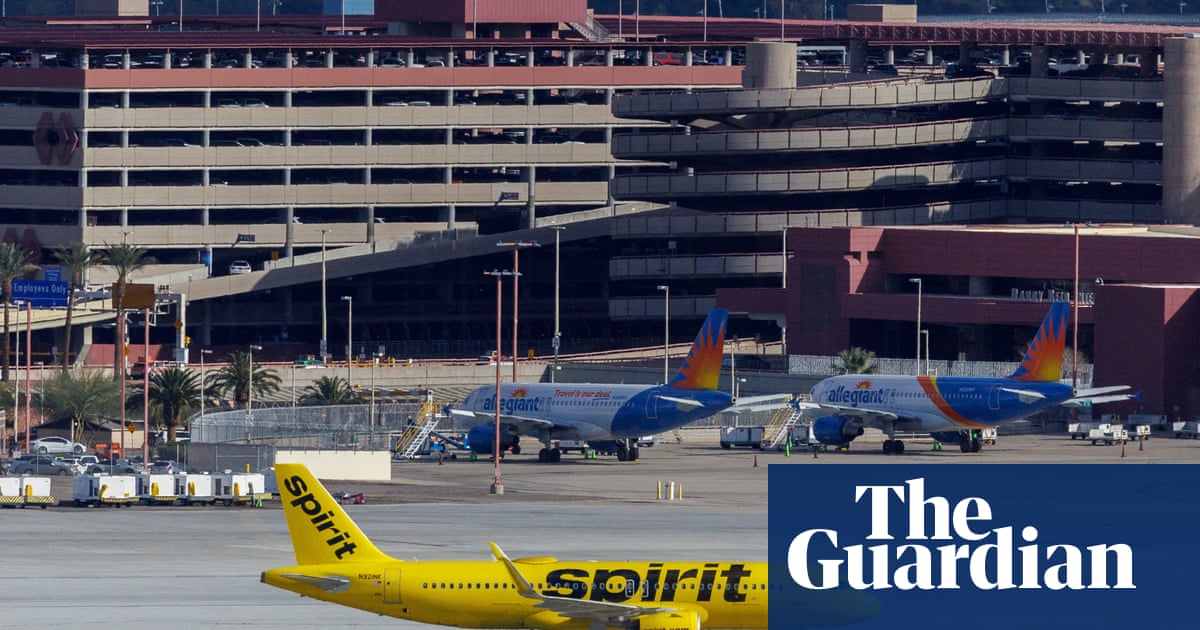In Sapzurro bay on the Colombia-Panama border, the blue land crab can be found scuttling around human infrastructure, burrowing in the nooks and crannies of the coastal settlement. The species, which can grow up to 15cm and ranges in colour from violet to bright cerulean blue, is considered critically endangered or vulnerable in this region, although it can be classed as invasive elsewhere. It traditionally lived in the region’s rich mangrove forests, many of which have now been urbanised – habitat loss that scientists have blamed for the crab’s decline.
But when scientists studied the distribution of the species around Sapzurro bay, they were surprised to find it was still thriving in areas where vegetation had been eliminated: crawling in pastures, banana and coconut plantations, and scurrying below concrete structures. While burrows in urban areas were fewer and smaller, it had successfully built homes along sewage canals and among houses.
A growing body of research is collecting data on species like this crustacean – threatened wildlife learning to thrive in urban spaces alongside humans.
“We often forget that we are dealing with living animals,” says José Marin Riascos, a marine ecologist at the Corporation Centre of Excellence in Marine Sciences of Colombia, who published the study on the blue land crab in April 2024. “They are not passive, they are active. If you change something, then they answer with another change.”
These findings also complicate the long-held idea that cities cannot be hotspots for animals and plants, and that conservation is something to do far away, in untouched places.
“We are assuming that when humans modify an ecosystem, the habitat for the biodiversity is lost,” says Riascos. That is not always the case, he says. In some contexts, “it is just changing”.
Broadly, cities have overwhelmingly negative impacts on wildlife. On average, if a region contains 100 species, only 25 would occur inside the city, and populations can be up to 92% smaller than outside the urban area. But the chunk of wildlife that remains includes some species that are actually doing better in cities than outside them. This group can offer useful insights about how animals can adapt – or not – to human spaces, but most importantly, how humans can adapt their cities to be more wildlife-friendly.
Studies have found 66 out of 529 bird species that live in cities are found only in urban areas. In Santo Domingo, in the Dominican Republic, threatened Hispaniolan parakeets hold their ground in urban green spaces and old buildings. Throughout North America, rounded, fluffy burrowing owls have found new burrows throughout the cities. Three endangered species of cockatoos in Australia – Baudin’s black cockatoo, Carnaby’s black cockatoo, and the forest red-tailed black cockatoo – have adapted to munching on urban pine plantations. In London, peregrine falcons have found mimics of tall trees in high-rise buildings.
“This is definitely something that we’ve ignored,” says Erica Spotswood, an urban ecologist at Second Nature Ecology + Design in California. In a 2021 study published in the Journal of Bioscience, she argues that cities could perform a variety of services for surrounding wildlife.
“We created cities in places that we like, along rivers, along the coast, in alluvial plains, at the bottom of valleys,” says Spotswood, and human preferences overlap with those of many species. This means cities also end up having a wide variety of types of habitats inside them, and a lot of diversity.
Urban spaces can be refuges during periods of stress and scarcity in the wild, providing easier access to an abundant diversity of resources year round. And cities can help species escape the threats animals face in the surrounding landscape – such as providing pollinators with refuge from pesticides systematically spread throughout agricultural land.
Studies have found that several different species of native bees are more abundant and more diverse in cities than in their surrounding landscapes, and that cities can be hotspots for some pollinators. “Bees are a great example,” says Robert Francis, professor of urban ecology and society at King’s College London. “The growing season for plants is extended in cities, so there are more plants over a longer period and the resources are really good.”
The smalltooth sawfish, once abundant in North American waters, is now thriving only in the urbanised coastal waters off South Florida, according to one 2020 paper. And studies show endangered western ringtail possums have found refuge in residential gardens across Australia, even when they have access to more rural areas.
When builders went to fill up an abandoned industrial site in Sydney to build a new stadium for the 2000 Olympics, they found the dirty water was filled with green and golden bell frogs – chunky, cartoonish-looking amphibians that are endangered across Australia.
“Everyone just thought it was a horrific, degraded urban site, but it turned out to be critical habitat for these frogs that were hanging on,” says Kylie Soanes, an urban ecologist at the University of Melbourne.
Like this frog, for “the vast majority” of threatened species found in cities, the city is their home range and humans built on top of it. But this also means the city is the last place that the species has a foothold – a category of animals that Soanes calls the “last chance species” – and so urban spaces are a crucial opportunity to protect and conserve them.
Doing so requires upending the assumption that cities cannot be places for conservation, she says, and recognising that they provide opportunities for intensive stewardship by people.
“Building a city and having places for people to live doesn’t mean we have to lose nature and wildlife – we can have both in the same place,” says Soanes. She points to growing more wildlife-friendly plants in private gardens, and sprinkling more wildlife-supporting infrastructure, such as bird nesting boxes, bee hotels and frog pondlets outside homes and around the city, “blurring the lines” between urban and natural.
In Brazil, the Programa Macacos Urbanos has built aerial wood-and-rope bridges across roads to help prevent monkeys electrocuting themselves by swinging on power lines. In the UK, manufacturers of building products have started making “swift bricks” – plastic bricks designed for swifts to nest in, and the roofs of bus stops have been converted into small patches of grass called “bee stops”.
“It’s just saturating the city with biodiversity friendly stuff: green space and green infrastructure,” says Francis, who lives in a housing estate with bat nest boxes built into some of the buildings. He notes, however, that it is still too early to know whether these small changes make significant differences to animal communities in cities, and at a large enough scale to support population growth over generations and repopulate all of the surrounding landscapes too, “or if it’s just a tiny, tiny difference”.
But, says Francis: “The research on cities lately has really transformed our understanding of urban ecosystems.”
Find more age of extinction coverage here, and follow biodiversity reporters Phoebe Weston and Patrick Greenfield on X for all the latest news and features



